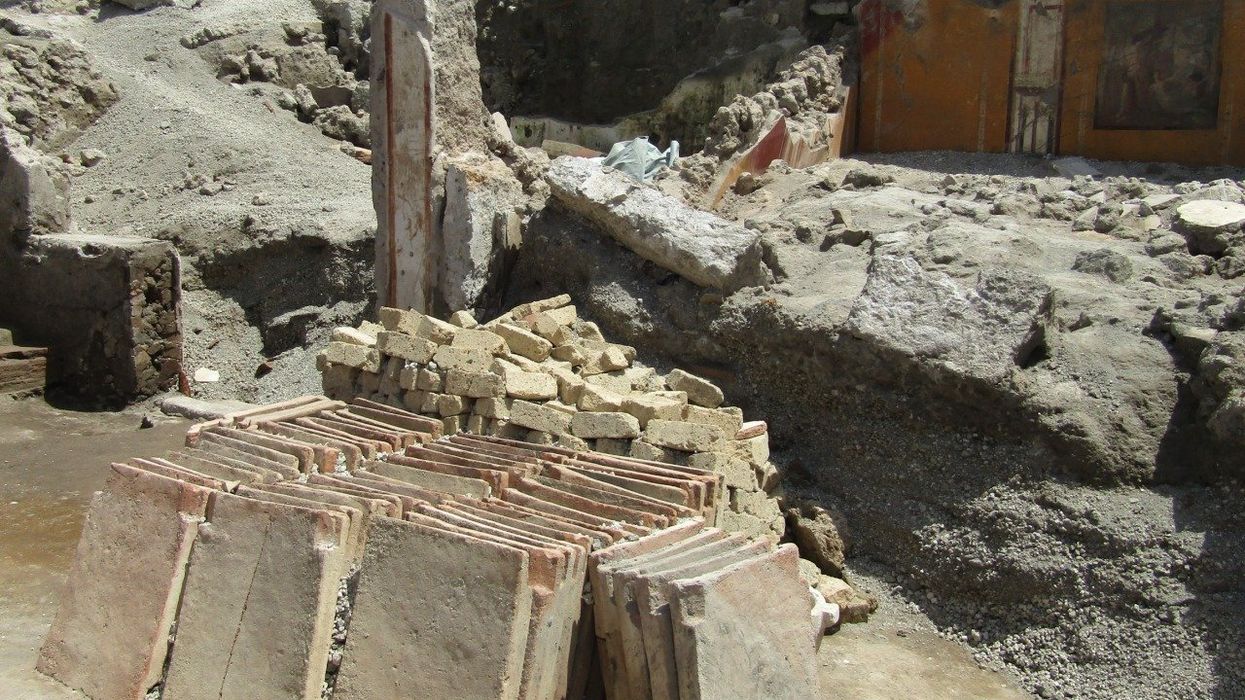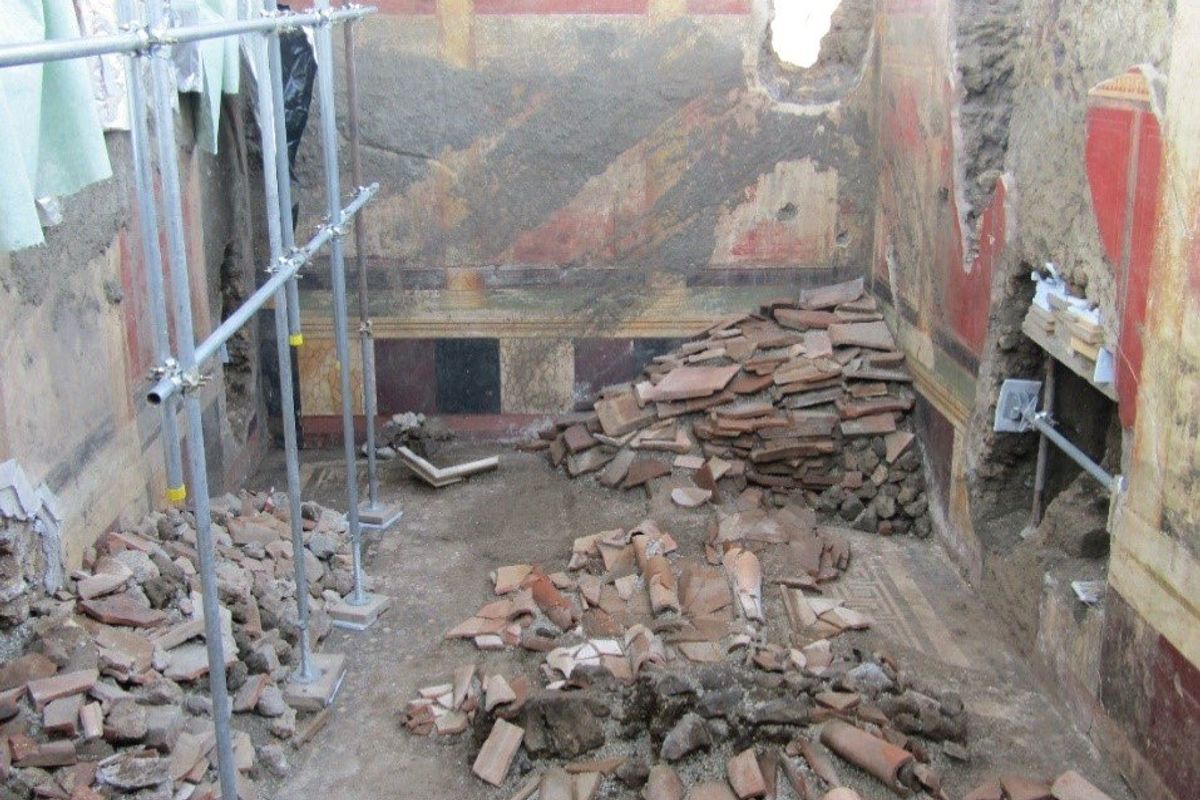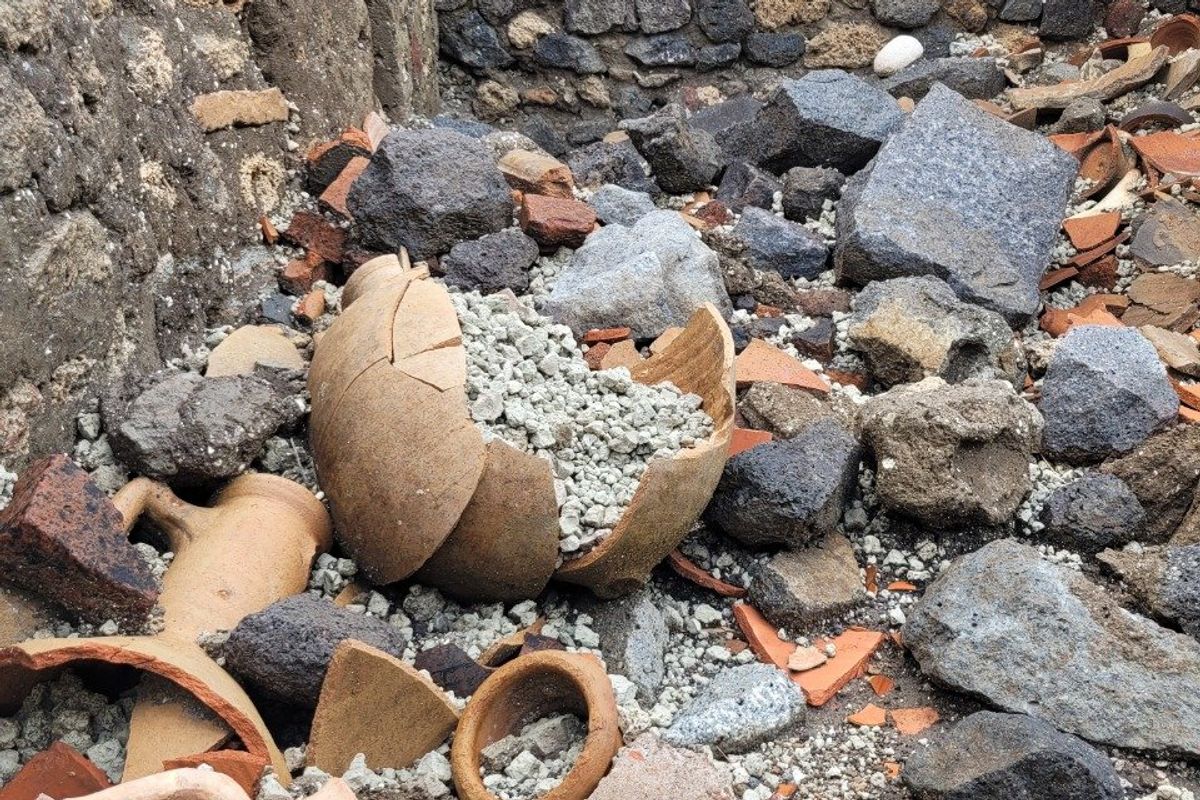Sinead Butler
Apr 07, 2024

Ancient Roman construction methods revealed in Pompeii building site excavation
An Ancient Roman building site from 2,000 years ago has recently been discovered by archaeologists, and it provides us with an insight into the construction techniques of this time.
In 79 CE, disaster struck when the devastating Mount Vesuvius volcanic eruption caused the city to burn - killing 2,000 Pompeiians in the city and up to 16,000 people in the wider region - with clouds of ash and debris blanketing the area and preserving it for two millennia.
Now, recent excavations at the Archaeological Park of Pompeii have uncovered evidence of a building site which appears to be in perfect condition with work tools, stacked tiles, bricks of tuff (a type of rock made of volcanic ash), and piles of lime.
This find gives researchers an idea of the construction techniques that were used in Ancient Rome for buildings that remain standing to this day.
The excavation of this area was "aimed at regulating the hydrogeological situation along the boundary between the excavated and unexcavated parts" of Pompeii.
"The excavation in Region IX, insula 10, planned during the years of the Great Pompeii Project is yielding, as was to be expected, important results for furthering our knowledge of the ancient city," the Director General for Museums, Massimo Osanna explained.

"An interdisciplinary research site, born from the previous excavation of Region V, from the need to consolidate the limits of the excavations, i.e. the walls of eruptive material left by 19th and 20th century excavations that loom dangerously over the excavated areas."
The building site was found inside a house which contained a bakery with a large oven, with artwork depicting flatbread and a glass of wine.
It is thought the site was active up until the eruption, as three victims of the natural disaster - two women and a boy - were discovered near the oven.
Signs of ongoing construction were clear from the building material stacked in the atrium and marks on the jamb of the door on the way to the reception room (tablinum) are thought to be tally marks in charcoal to keep track of the building site accounts.
While in the room where the shrine would be (lararium), electoral inscriptions were discovered (we would call them election manifestos today) urging people to vote for Aulus Rustius Verus.
Clay containers (amphorae) were also in this room and are thought to have been used to mix plaster for the walls.

Lead weights –plumb bobs—for ensuring a perfectly vertical wall ('plumb') to iron hoes used for preparing the mortar and working the lime were some of the construction tools archaeologists came across.
Materials found in this excavation also reaffirm the Roman concrete mixing method that was only figured out by experts last year.
It wasn't lime being mixed with water before dry sand (pozzolana) to make the concrete as previously thought, instead various analyses concluded that dry lime and dry pozzolana are mixed together with hot water at a high temperature to create a durable concrete that sets speedily.
"It is yet another example of how the small city of Pompeii makes us understand so many things about the great Roman Empire, not least the use of cement," says Archaeological Park of Pompeii Director Gabriel Zuchtriegel.
"The data emerging seems to point to the use of quicklime in the construction phase of the walls, a practice already hypothesized in the past and capable of considerably speeding up the time of a new construction, but also of the renovation of buildings damaged, for example, by an earthquake."
How to join the indy100's free WhatsApp channel
Sign up to our free indy100 weekly newsletter
Have your say in our news democracy. Click the upvote icon at the top of the page to help raise this article through the indy100 rankings.
Top 100
The Conversation (0)













